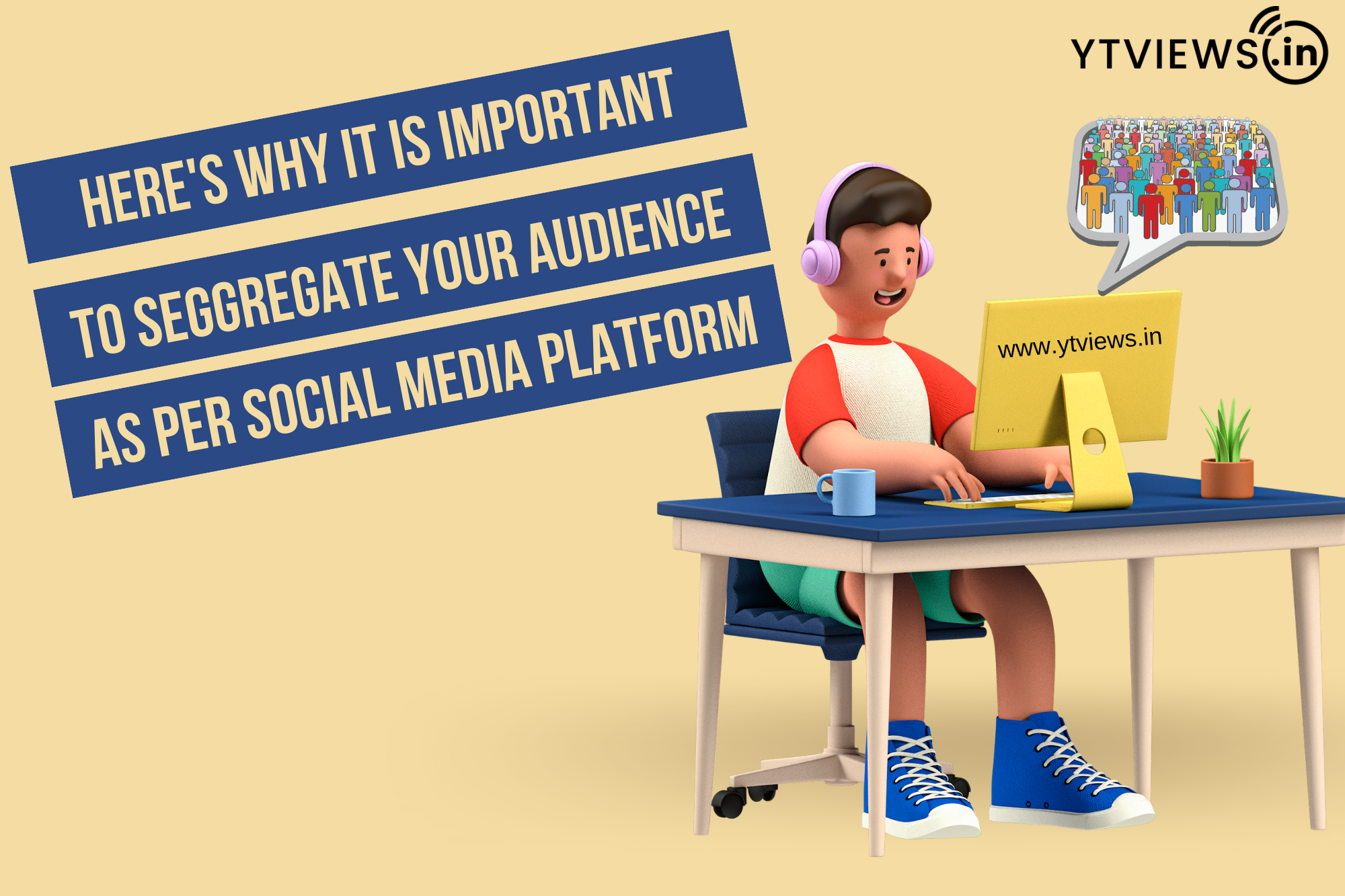Here’s why it is important to segregate your audience as per social media platform
 Establishing your social media target group will help you create brand guidelines and is typically similar to creating your company’s buyer personas.
Establishing your social media target group will help you create brand guidelines and is typically similar to creating your company’s buyer personas.
Who is the target audience for social media?
 A group of people whom you’ve identified and wish to appeal to is what we refer to as a social media target audience. Based on factors like age, occupation, income level, degree of education, geography, or behaviour, for example. They are the people who are most likely to be interested in your product and who make up your target audience on social media.
A group of people whom you’ve identified and wish to appeal to is what we refer to as a social media target audience. Based on factors like age, occupation, income level, degree of education, geography, or behaviour, for example. They are the people who are most likely to be interested in your product and who make up your target audience on social media.
A social media target audience will, in the end, assist you in effectively marketing your product and in prioritising your target market. Let’s move on to how to locate your target audience now that we’ve discussed what a social media target audience is and why it’s useful.
How to Use Social Media to determine who your Target Audience is?
 You should base the development of your target audience on facts and studies. We’ve included five steps that can help you get started below:
You should base the development of your target audience on facts and studies. We’ve included five steps that can help you get started below:
-
Recognize or develop buyer personas

You may utilise the same data for your target group on social media if your company already has buyer personas.
You may find a lot of the demographic information by looking at your statistics. Analyze your social media statistics and keep an eye on any ongoing promotions. Building on what you already know about your audience should be possible with the help of this knowledge.
After that, elaborate on those demographic facts. Address inquiries like, “What problems does my product or service solve?” and “What are the pain points of my audience?”
-
Determine the areas where your audience is most engaged

Find out where your audience hangs out online once you have a better knowledge of who they are. You must determine whether your community is present on each individual social media network.
For instance, older generations have used Facebook more frequently during the previous four years. The percentage of the Silent generation using Facebook has actually almost doubled.
Twitter, on the other hand, draws in younger audiences. In actuality, 26% of Twitter users are 30-49 years old, and 38% of users are between the ages of 18 and 29.
Instagram users of all ages are drawn to it, with 35% being 25–34 and 30% being 18–24.
You may prioritise the social media channels you wish to use by determining where your audience is.
-
Have a look at your competitors

Consider your competitors when trying to define your target audience on social media. What vocal style do they have? Who are they trying to attract?
By seeing who comments on and interacts with their postings, you may determine this. Also, examine the social media platforms on which they are active, their top followers, their engagement rate, and the hashtags they employ.
Also, you can use social media tools to look up competing websites using keywords you want to target and you can use your own analytics to discover additional pages that your audience enjoys.
-
Survey your customers

Even though you’ll have a tonne of information at your disposal, it’s always a smart idea to speak with your present clients.
You can identify your true clients and the social media platforms they favour by conducting surveys. You can enquire about their content consumption habits, favourite social media platforms, and followers.
-
Look through Facebook Groups

Finding them through Facebook groups is an excellent option if the majority of your audience uses Facebook. Facebook groups are gaining popularity among social media users and are a useful resource for finding out more about your target market.
Creating effective marketing campaigns requires developing your social media target demographic. Also, you can concentrate your efforts on the appropriate social media sites and posts. Social media is a crucial platform for connecting with and understanding your target demographic.









































